Chris Baty's Blog, page 223
November 23, 2012
30 Covers, 30 Days 2012: Day 23
Happy Food Coma Day! Oh, that’s not a thing? Well, today’s cover was created by Brett McFadden! (Sorry about the mixup/double cover. Back on schedule tomorrow!)
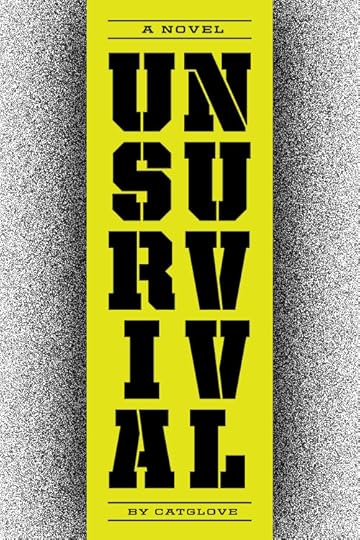
Unsurvival by Catglove
It is the year 2271, and the human race has nearly died out four times, from a combination of global warming and diminshing resources. A new government seeks to repopulate the Earth by attempting to speed up evolution, using Project Darwin. The project weeds out the weak humans, leaving only the strong, making sure that the new race of superhumans can survive in the harsh post-apocoliptic world.
MacFadden & Thorpe is the San Francisco–based studio of Brett MacFadden and Scott Thorpe. They believe in an expansive approach to design and its possibilities. They have worked with a wide range of clients, from major corporations to individual artists, on print and screen-based media. They are on the faculty of the California College of Arts, where they teach in the undergrad and graduate design programs. Prior to starting their studio in 2008, they both worked at Chronicle Books: a general interest publisher known for their spirited approach to design.
November 22, 2012
30 Covers, 30 Days 2012: Day 22
Happy Thanksgiving to all you (and us) American Wrimos. While we’re stuffing our faces with mashed potatoes and gravy, Christine Mau has designed today’s cover!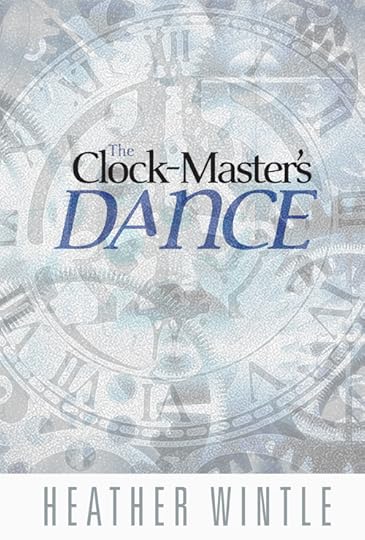
The Clock Master’s Danceby Heather Wintle
After a severe accident left her crippled and destroyed her dreams of being a ballet dancer, Sonya St. Eaton returns to Mitterdorf, the town where she grew up and ran away from three years before. What she doesn’t expect is that life there has continued without her, and as she watches everyone else’s lives moving forward when hers has stopped, Sonya tries unsuccessfully to find something to fulfill her like dancing once could.
Then, her wish comes true, and through various magical occurrences, whenever her family’s grandfather clock strikes midnight, Sonya is taken to a land called Wintheure. This wondrous place, she discovers, is filled with glittering snowflakes, waltzing fairies, and a living, breathing version of the Nutcracker she was given as a child. Most of all, though, it is here that Sonya has the opportunity to dance again.
But all is not peaceful in this enchanted land. War is stirring, and Sonya begins to sense that something isn’t quite right in Wintheure. The Nutcracker is charming and handsome, yet darkness lurks in his mind, and the evil Rat King isn’t what he appears, either. And while she loves being able to move her damaged leg once more, the dance is becoming obsessive, overwhelming and corrupting her.
As troubles pile up in both Mitterdorf and Wintheure, Sonya realizes that something is linking the two, and it isn’t her. To get to the bottom of what’s causing the disturbance, she enlists the help of the boy whose heart she once broke, and together, they must hurry to put both worlds to rights. Because the longer she’s torn between them, the more Sonya forgets her dreams and desires, questioning which world she truly belongs to.
In her day job, Christine Mau leads Global Design for the Kleenex® brand at Kimberly-Clark. She is a trend forecasting panelist for Global Color Research, a frequent lecturer at The School of visual Arts and active AIGA presenter. On the weekends, she designs, paints and works with steel to satisfy her creative muse. Christine’s work has been recognized by the National Parenting Publications, Wisconsin Library Association, AIGA, I.D., Pentawards and The DieLine.
November 21, 2012
Letters & Light and Literature & Latte: The Scrivener Edition
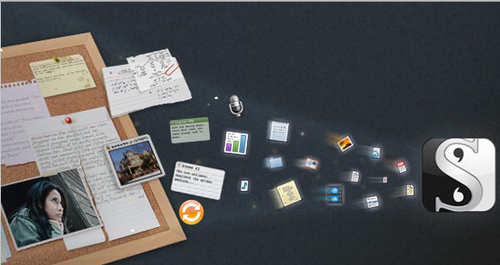
Each year, we interrogate one or two NaNoWriMo corporate sponsors. It’s our way of saying thanks for the vital funding that our sponsors contribute to NaNoWriMo and the Young Writers Program. Today, we asked Ioa Petra’ka some hard-hitting questions about Portlandia, writing parties, and Scrivener pro-tips.
Remember to check out Scrivener’s offers for Wrimos on the NaNo site, and in the forums!
What inspired you to first take part in the delightfully masochistic NaNoWriMo? Do you enjoy inflicting pain upon yourself?
I was half mad back then, and so many of my choices were not based upon the sound principles of reason, logic and prudence. Thankfully, I do not regret madness: it has led to many wonderful and painful things. Impulsiveness aside, I wanted to challenge myself with the long-form story format.
Up until that point I had written exclusively in the short story format, which is still something I feel more at home with. I like short, snappy little ideas. Those can be difficult to wring out, and out, and out until they are hundreds of pages long. So it is still definitely this challenge that brings me back to the project, going on ten years now.
You started working at Scrivener after “meeting” them in NaNoWriMo’s forums. Do you tell people that you now make a living off of your novel writing?
I’ve never quite thought of it that way, but you know, I could go around saying that now! In general, it’s been a huge pleasure to be able to work for the writing community at large, with a group of people that are similarly minded. When I was growing up, I wanted to be a writer, and while I still consider myself to be a writer, I’m also happy to be an enabler. That’s always been the important part of my life: forwarding the art of writing in culture. Whether I’m doing that with my own words, or making it easier for everyone else to do so, it makes no difference to me.
Since you author the Scrivener user manual, you must know more about Scrivener than anyone else.
This is sadly probably true, but the line is thinner than you might think! Over the years, a number of authors and educators have set up web sites to help people learn Scrivener, either through video tutorials, blogs or even published books. So there is a fantastic group of helpful and knowledgeable people that together create the Scrivener community.
Do you write the user manual in NaNoWriMo style—with crazy bursts of typing, telling your inner editor to go away?
I would love to say that I do not, that I carefully plan everything out and meticulously cover every angle of the software when describing features. But the reality of writing software manuals is that they are never done, software changes rapidly, and it can often take quite a bit of work to explain an unfamiliar concept of the software.
There are many aspects of this that are more creative than I had originally presumed, and while I am glad for that, it can be rather time-intensive. This inevitably means that there is a lot more writing than there is editing going on, and I weep at all of the mistakes and typos that surely abound.
What is your favorite Scrivener feature that many don’t know about?
I would say the ability to cut through your manuscript and look at it from non-linear angles without sacrificing the standard text editing experience. That probably all sounds like voodoo when I put it like that.
Scrivener basically gives you a bunch of little tools like colored cards and search tools and corkboards and then lets you come up with neat ways of grasping the entirety of your work with them in that way that feels fluid and natural—in ways that can adapt to how you prefer to work as a writer, rather than trying to shoehorn everyone and everything into a particular methodology of strict features.
If you were to write a pep talk to Wrimos that involved Scrivener, what would you focus on?
We all have so many different ways of writing that it can be difficult to provide universal advice like this. I guess one piece of advice I would have for people who are struggling with a scene: just jump past it. Put down a note to yourself as a comment or annotation and move on to something you already have words for. It’s easy to work this way when your whole book is a neat stack of topical items on the left side of the window that you can use to organize and navigate in your manuscript.
Portland has a rich literary history with Powell’s Books, Tin House, Ken Kesey—and Beezus and Ramona and Henry Huggins, of course. How has it influenced your writing?
Not only do we have a literary history, but we have a lot of readers as well. This town loves its books, probably because we all have to sit around indoors for eight months out of the year to avoid the rain. Of course there is Powell’s bookstore which will make just about anyone who loves books get a little weak in the knees whenever you step into it. The public library system is fantastic for a small city, opening up the world of literature and knowledge to anyone, no matter what the budget. So I think the thing that has been of greatest influence to me is the overall culture of books here.
They say a writer should read as much as they write, and living in a place that has books coming out of its ears can help make that goal a matter of second-nature. Most importantly, the NaNoWriMo community is huge here. Our parties are giant and our write-ins are well-populated and scattered all over the city; you could go write-in hopping every night if you wanted to and we challenge major cities to word wars. It’s great to see so many people working on their books and getting that novel out of their system and having a fun time with it.
It seems like NaNoWriMo should be included on an episode of Portlandia. Can you make that happen?
This is a fantastic idea. I’m picturing a bunch of harried writers arguing over the total ecological impact of using a computer to write vs. pen and paper. How many trees and beetles must die, how much mercury and lithium ion must we use? What is the most vegan way to write?
Final words of advice for Wrimos?
Something that has worked well for me is to have a block of time each day, preferably at the same time of day, that is all about NaNo—no exceptions. When I approach that time of day, I start going over the book in my mind. I like to write out of the house, and so as I’m walking to a coffee shop, I’ll just go over bits of prose in my mind or plot structures, and push out all of the worries and thoughts of the day. When I’m ready to open my laptop and start writing, I’m primed and ready to focus on just that.
This year I’ve been setting aside the mornings for writing. I won’t allow myself to do anything until I’m done writing for the day. Why allow myself the luxury of indulgences like eating, if I don’t have my 1,667 words!
 When Ioa Petra’ka isn’t working on the Scrivener user manual itself, he’s often answering questions about the software. He started out as a somewhat neurotically enthusiastic forum member in 2005, and in 2010, Literature & Latte reached a point where they could make his time spent there an official activity. He’s still pretty neurotic about it though. These days, he also works on the website and helps with software design for Scrivener and their new beast, Scapple. Given his love of literature & software, he couldn’t imagine a better job.
When Ioa Petra’ka isn’t working on the Scrivener user manual itself, he’s often answering questions about the software. He started out as a somewhat neurotically enthusiastic forum member in 2005, and in 2010, Literature & Latte reached a point where they could make his time spent there an official activity. He’s still pretty neurotic about it though. These days, he also works on the website and helps with software design for Scrivener and their new beast, Scapple. Given his love of literature & software, he couldn’t imagine a better job.
Photo courtesy of Literature & Latte.
30 Covers, 30 Days 2012: Day 21
Today’s cover was created by Cary M. King!

The Dreamer by Sapphire16
Jane lives in a world where everyone disappears when they fall asleep and returns when they wake. No one remembers anything at all about what happens during the night, except for the rare Dreamers, like Jane.
In the past, the government has requested that Dreamers work with them for research purposes, but when they suddenly change this request to a demand that all Dreamers turn themselves in, rumors start and suspicion grows. Jane must choose a side for the fast rising fight, and find out the truth about Dreamers and where people are disappearing to.
Cary M. King graduated from the University of Alaska, Anchorage receiving a BFA in Art with emphasis in graphic design and photography in 1993. In 2010, Cary was elected president of AIGA Alaska and continues to support the organization as an adviser of their board. Beginning in 2012, Cary was hired as a part-time adjunct instructor at the University of Alaska, Anchorage, teaching Intermediate and Advanced Graphic Design. Cary is married to his wife and business partner Jill and they love design, movies and the outdoors.
November 20, 2012
Postcards from NaNoLand
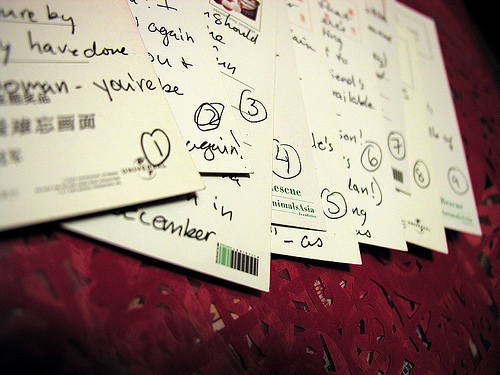
We’re at the two-thirds mark of NaNoWriMo, and fresh off the Night of Writing Dangerously. As fantastic as the event in San Francisco is, one of my favorite things is that so many of you who can’t make the trip throw your own Dangerous Nights. Hawaii has its Night of Writing With Aloha, and Wisconsin and Atlanta both had regional shindigs full of noveling derring-do.
As we start to enter the final stretch of November, we’re sharing virtual Postcards from the corners of NaNoLand. Read on to see how Niall Leonard (author of Crusher), the CreateSpace team, and a Stanford class are keeping up with their 2012 NaNo-novels:

Niall Leonard
Jeez, whose idea was it that I should try to keep a NaNoWriMo blog at the same time as NaNoWriMo? It’s hard enough getting 1667 coherent words down onto the page without writing a commentary at the same time. At the West London write-in earlier this month (the NaNo bug is clearly catching—our turnout was massive compared to last year), I was still typing as the pub managers switched the lights off, and I cycled home 150 words short. Fortunately, back at my kitchen table I managed to find 140 more words to fit into the gaps, so as of now I’m still on target. Only now I’m writing this instead of my NaNo-novel and it’s making me twitchy, so I’m going to keep it brief.
I have to confess I’m nervous this year because I don’t have as detailed an outline as I had last time. I am discovering the story one episode at a time—remember that Wallace and Gromit movie where they’re riding a toy train and Gromit is laying down tracks just ahead of the engine in a panicky blur? That’s kind of how I feel. I just have to keep telling myself that it’s only a first draft, and forcing myself to get those words down will also force me to think about the story and hopefully find those answers I need.
And the adrenaline rush is part of the fun…
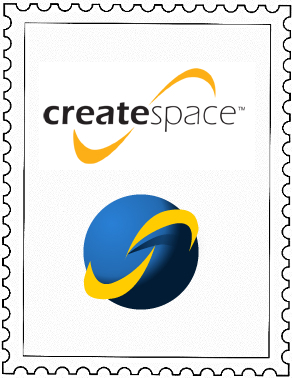
The CreateSpace & KDP Team
You’ve already heard from the authors at CreateSpace and Kindle Direct Publishing who are taking on NaNoWriMo. They check back in with us to let us know what they’ve thought of the process so far, lessons, bumps, and advice included. (Read more about their journey on their blog!)
My technique so far has been to think of this project as a skeleton. I’m building a firm foundation that I can put muscle on later.
— Margaret, CreateSpace
Stick with it! Being behind at the halfway point can be disheartening, but there’s still plenty of time to hit 50K! The “Words Per Day To Finish On Time” stat on my NaNoWriMo page is very reassuring (and helpful); I know I can manage 2K/day.
— Phoebe, Kindle Direct Publishing
One of the most fun things I’ve found in writing my novel is the research. If a location I’m using includes a huge forest or mountain or something geographic, I’m immediately online trying to find a suitable site. If a character uses a computer, drives a car, etc., then I get to try and figure out what they would use. Asking questions like “Is this character a Mac user?” is something that’s fun to work through, and it helps me build better characters.
— Zach, CreateSpace
The first few times I did NaNo, I beat myself up for not sticking with the 1.6K/day regimen, and then when I didn’t finish, I beat myself up for it more. I’m really pleased with the general zen I’ve got about it now. I may be 14K behind where I should be, but dang it, I’m 7K ahead of nothing at all.
— Katy, Kindle Direct Publishing
NaNoWriMo is a lofty goal in itself, and just setting out to do it feels like an accomplishment. I would love to have written more at this point, but with some groundwork in place it may be easier to at least contribute every day. I typically write sporadically, from a haiku to a short story, once a day to once a month. If I end up with a short story or novel, I will be pleased that I tried and created something new.
— Jonny, CreateSpace
Everyone should be proud of him or herself at this point for even taking on this challenge. It’s a great way to get to know your fellow authors and share in the passion of the written word.
— Andrea, CreateSpace
 Stanford University’s Novel Writing Intensive Class
Stanford University’s Novel Writing Intensive Class
Greetings, Wrimos around the world. This is a short postcard from Stanford University, where sixteen students are taking part in our NaNoWrimo-centered course called Novel Writing Intensive.
We spent most of September and October looking at the structure and style of a variety of short novels including F. Scott Fitzgerald’s The Great Gatsby, Penelope Fitzgerald’s The Bookshop, and Stewart O’Nan’s Last Night at the Lobster. We’ve studied position changes and interviewed our characters and written outlines and practiced sentence structures and experimented with dialogue and all sorts of other things until we’re blue in the face. It was more than time to start writing!
And that’s exactly what our students have done. We’ve learned a few important NaNoWrimo lessons so far:
Cookies and coffee help. A lot.
A visit from Chris Baty helps a lot too. Thanks, Chris!
Being around other people tapping their keyboards make us want to tap our keyboards. So we run in Writing Packs.
Sometimes it pays to plan your novel for two months in advance, and sometimes it pays to scrap all that and run with new ideas.
Word Sprints rule. In fifteen minutes our students can write between 200 to 1100 (seriously!) words. A few of those, and we can call it a day.
My co-teacher, Scott Hutchins, and I will send on more updates. If you have any questions, you can write to me, and I’ll pass them along to the class. Best wishes on your novels!
Top photo by Flickr user massdistraction.
How’re your novels coming along? What have you learned so far about your writing process?
30 Covers, 30 Days 2012: Day 20
Today’s cover was designed by Jennifer Morla!

Fireheart by Wolfdog16
Meet Sonja Leoni, the 21-year-old lead singer of a rock-pop band called FireHeart that’s sitting at the top of the charts. Her life is everything you’d expect from fame: the fans, the paparazzi, and that one irksome band member, namely, Jared Augustine, who makes it quite clear he has a thing for her.
But when she stumbles upon writer’s block while preparing her next album, an unexpected offer of help is extended from a simple guitar-wielding individual she had bumped into a couple months before. This young man, Axle Garrett, an open-minded follower of Christ with a heart of integrity, proves his worth as a guitarist and backup songwriter, despite his drastic differences. But Sonja’s decision to permit Axle’s assistance… forget flipping her world around—it downright takes her from it as she is tossed into a life-changing experience that she never knew she’d have. What’s worse: hatred rises as Jared grows increasingly envious of Axle.
Jennifer Morla is President of Morla Design, San Francisco. With over 300 awards of excellence, Ms. Morla’s work has been recognized by virtually every organization in the field of visual communication. Ms. Morla lectures internationally, teaches at California College of the Arts, is an elected member of Alliance Graphique Internationale (AGI), and is the recipient of graphic design’s most honored award, the AIGA Medal.
November 19, 2012
30 Covers, 30 Days 2012: Day 19
Today’s cover was created by illustrator and designer Amanda Woodford!

Mars’ Run by Sandra Wolf
It all began with a run through a museum. Only the run was a hunt, and Tyler was the hunted. Or more precisely - pursued. Why? Because Detective Ame Scott had proof that Tyler had killed a “rat” (one of the Mars’ no-income, lower level dwelling folks). Well - Tyler would disagree with that assessment, since Footy, the “rat” informant he sometimes associated with was alive and well when he left. But the detective had to arrest someone - a local journalist was writing about the suspicious deaths and the public pressured them to fix the “problem”. Unknown to them two corporations were playing with their lab “rats” and a government official was pulling stings of everyone. All set in the Hundred Year Celebrations of Earth’s Uninhability.
Amanda Woodford is a freelance illustrator, founding member of the Chicago Design Museum, and an art teacher at a non-profit that inspired a disco anthem. She lives in a tiny apartment in Chicago with her husband, Tanner, and her two furry friends - Stella & Willis.
November 18, 2012
30 Covers, 30 Days 2012: Day 18
Today’s cover was designed by Traci Moore Clay!

The Key by J.L. Philips
Phillis is the last of her family. Through accidents, illness and losing her great-grandmother Edith, she is the last of a once strong family. On her deathbed Edith gives Phillis a skeleton key and tells her that it is the “key to the family’s heritage.” But, Phillis doesn’t know what thekey opens as Edith died before she could tell her.
Now Phillis is on the hunt for what thekey opens and also to find out more of her heritage. She is helped by Edith’s lover and Phillis’s friend. But Phillis is not sure he can be trusted. Along the way of discovery Phillis finds strength in herself and many mysteries of the family.
After graduating from the University of Kansas in 1993, Traci Moore Clay worked as an in-house designer for several local non-profits, and in a local design firm before founding Traci Moore Graphics (TMG), in 1997. In 2003, Traci began lecturing in visual communications in the Sam Fox School of Design & Visual Arts at Washington University in St. Louis, teaching both typography and introductory visual communications. Traci is the immediate past-president of the St. Louis Chapter of AIGA–the professional association for designers. She has been a member and president, of the University City Education Foundation and the Municipal Commission on Arts and Letters for University City. She currently resides in University City with her dog, Oscar.
November 17, 2012
30 Covers, 30 Days 2012: Day 17
Today’s cover was created by Mark Dudlik!
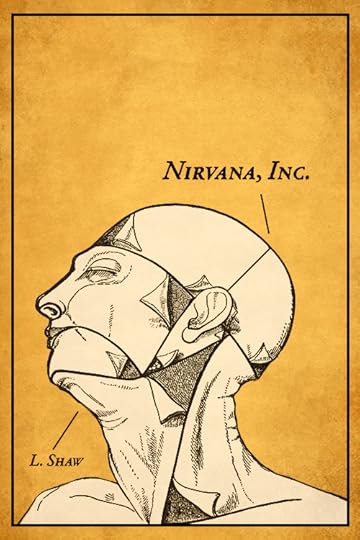
Nirvana Inc. by L. Shaw
Rayn Hart lives in the slums, where refurbished biotech alterations are stretched beyond legality. As a pleasure pusher, Rayn survives in the midst of entertainment clubs and shady deals by helping others reach ecstasy through neural stimulation. But when repair nanobots malfunction, her EmoCore is altered beyond any implant ever made: she can now read cell memory, alive or dead.
Her new ability attracts the attention of Nirvana Inc, the biggest implant development company. But Rayn isn’t about to be turned into a guinea pig. Just when she thinks she is safely hiding into the darkest part of the slums, Quirin Eberle, a biotech regulation officer, tracks her down. He wants her to analyze victims of an implant hacker and help him track down the killer; or he’ll turn her over to Nirvana Inc.
Mark Dudlik is a designer for the Office of the President at Arizona State University. He is also Executive Director of Lost Creature, a 501(c)(3) that brings culture and creativity together through programs such as Phoenix Design Week and the Phoenix Design Museum. He is currently Vice-President & Design For Good Director of AIGA Arizona. In his free time he makes terrible drawings at Pen & Pandas.
November 16, 2012
10 Tips on How to Finish Your NaNoWriMo Novel

I learned about National Novel Writing Month through my creative writing professor, Randon Noble, during my freshman year at American University in Washington, D.C. In October of 2006, almost everyone in my creative writing class decided to give NaNoWriMo a try, including me. Most people mentioned writing about home, dating, or other personal and realistic topics.
On the night of November 1, Edward P. Jones visited American University to read from his book, The Known World. During the Q&A, a student in the crowd told him that this was the first day of NaNoWriMo. When the student asked Mr. Jones if he thought someone could write a 50,000 word novel in 30 days, Mr. Jones said absolutely not and if someone did, it wouldn’t be worth reading. After that book reading, I think half of my creative writing class decided not to participate in NaNoWriMo.
But I did participate.
One of the highest motivating factors for me was that I always wanted to write a novel. I had been writing shorter works for years but I had never made it to 50,000 words before. To complete NaNoWriMo, I couldn’t focus on the quality of the writing, I would have to concentrate on the number of words I wrote per day. NaNoWriMo became an opportunity to write a first draft of a novel that could then be revised over time.
While I participated in NaNoWriMo, I set a daily word count and kept track of my progress on the NaNoWriMo website. I had to write 1,667 words per day before I could go to bed. I lived in a tiny triple dorm room with two roommates I couldn’t stand so I often went to the library or wrote while they were sleeping (which was most of the time). Believe me, writing at one or two in the morning didn’t earn me any brownie points as a roommate. But soon I found that I was writing at least 2,000 words per day, so I could write less on some days.
On the first or second day of NaNoWriMo, I had a fight with one of my roommates and I escaped into the library. I started writing faster and harder than I had ever written before. The first line of my novel became: “A machine was invented that sucked human bodies up like slugs and converted their bodies and their subsequent deaths into energy.” Before I knew it, I was writing a novel about a death machine. Something about the inventiveness of science fiction made the writing easier.
That evening, I remember my roommate walked into the library and interrupted me to say something. I gave her a deadly glare and immediately dove back into writing. Nothing was stopping me.
I started writing my novel longhand, but within the first week, I decided to write exclusively on the computer because I found that I typed quicker. The other students in my creative writing class who did not give up on NaNoWriMo would talk to me about their processes. We created an informal NaNoWriMo support group. Writing a novel in a month was still difficult and when I faced a problem (how to organize disembodied scenes or what to do when the writing wasn’t flowing), I had to create new solutions to get me through the month.
Here’s my advice for completing a 50,000-word novel within 30 days:
Be confident, not critical. NaNoWriMo is about word count, not about perfection or style. Think of this as a first draft. Just produce, produce, produce.
Write about an idea you’re obsessed with and can’t get out of your mind. Remember, your novel can always change tracks.
When you’re tired of writing about that main idea, create subplots to fill pages. When I was sick of writing about the influence of a death machine, I wrote a love story subplot.
Write scenes. Scenes with narration, dialogue, action, and description take up more space than expository information.
Set a word minimum everyday. NaNoWriMo recommends 1667, but if you’ve fallen behind, increase that. Do not set a daily hour minimum because some days you’ll write more quickly than others. Tell yourself that you can’t go to bed until you reach that minimum number of words. Keep track of your word count by checking the number of words in your document at the beginning and end of each day.
If you miss a day, then make up those words as soon as possible. Some people prefer to make up those missing words on the weekend when they have more time. Whatever you do, don’t wait until the end of the month.
Don’t write linearly. Bounce around, writing scenes that occur at different points in the novel. During one week, for example, write a scene that takes place at the end of your story, then one that takes place in the middle, and one that takes place in the beginning. This keeps you interested in the material and prevents you from feeling stuck. Leave markers for areas that you want to come back to and fill in. On days when you feel uninspired, go to these markers and start writing those missing scenes.
At some point, it doesn’t really matter when, create an outline to organize your scenes.
Don’t delete anything unless it’s 100% necessary to make the novel seem cohesive or coherent. Erasure will move you in the opposite direction of where you want to go. Temporarily cut scenes instead and save them in a different file. You never know when an extraneous scene might become useful. If you do delete a scene, then replace it.
Find a quiet writing space that you can regularly use like a public library or a bedroom. One of my colleagues even writes in a closet. Try not to piss off your roommates.
NaNoWriMo allowed me to complete the first draft of my first novel in 28 days (two days ahead of schedule). Printing out the NaNoWriMo winner’s certificate felt gratifying and my roommates were happy to brag about living with an author.
The idea for my novel had arrived late one night after playing a game of Trivial Pursuit in the common lounge. I was given the Trivial Pursuit question: Who was the scientist that invented the machine that turned slugs into energy? I didn’t know the answer, but I imagined a scientist putting a live, slimy creature into a metallic box, a flash of lightning, and then a sudden production of energy. I figured, if people knew how to make energy from slugs, what was stopping them from generating energy from human bodies? I had read a great deal of J. G. Ballard and Kurt Vonnegut recently and I became obsessed with the idea of a human energy machine.
A professor in the Justice, Law, and Society Department heard about the premise of my novel and encouraged me to edit it. He saw the death machine I had created as a metaphor for the death penalty. I spent the next eight months editing the novel and eventually titled it Our Machinery before I submitted it for publication at different presses.
Initially, I thought my professor’s publishing house would release the book but they did not have the funds to support the project. One day in the cafeteria, I picked up a copy of Washington D.C.’s City Paper and read about a press called Brown Paper Publishing. The press was promoting one of their writers, Goodloe Byron, as he traveled around the country distributing his novel for free. I loved the idea of free books so I took the Metro to a coffee shop in Dupont Circle to pick up his novel.
A few days later, I sent Brown Paper Publishing a short email telling them about my novel and asking if they might be interested in reading it. They emailed me back right away saying yes. I sent them my novel, and the following week they asked if they could publish Our Machinery in three parts through their literary magazine, Predicate. A few months later, they published my novel as a stand-alone title.
Brown Paper Publishing released Our Machinery in 2008, a few months before my 20th birthday.
Thaïs Miller is an author of novels, short stories, and poetry, as well as a writing instructor at Gotham Writers’ Workshop
Photo by Flickr user Chapendra.
Chris Baty's Blog
- Chris Baty's profile
- 63 followers



